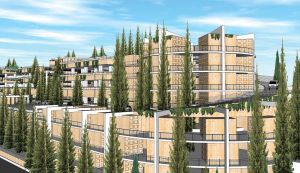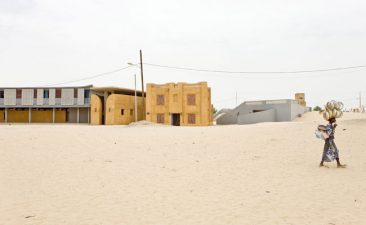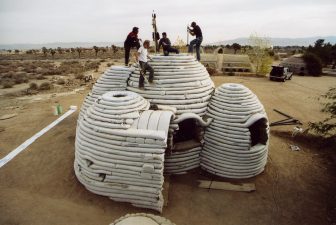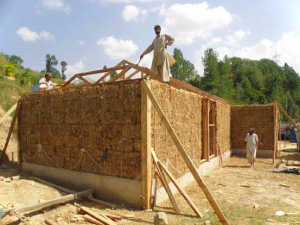 High-rise necropolises offer a greener way of dense burial and a dignified appearance to comfort mourners.
High-rise necropolises offer a greener way of dense burial and a dignified appearance to comfort mourners.
Having buried two loved ones in Israel myself, I know how wearisome field cemeteries are. Arriving on foot, I trudge along winding interior roads for long minutes, sweating and squinting against the glare in summer or huddling under a dripping umbrella in winter. No matter how often I’ve visited the graves, unfamiliar new roads built to accommodate fresh burial grounds disorientate me and I lose my way. According to Israel’s Central Bureau of Statistics, the current yearly death rate stands at 5.3 per 1000 people, so new roads and burial grounds must be expected.
Having located the section, I gingerly step between graves, careful not to disrespect any by walking on them. The grave behind me is decorated with a cactus garden, the family’s attempt to soften the harsh look of the place. Cemeteries in Israel don’t have the luxury of grassy spaces and flowering borders; there simply isn’t enough space, nor water to spare for maintaining tender greenery. Most mourners have nothing of comfort to rest their eyes on but a tombstone and the traditional pebble placed on the grave. People of means erect headstones of imported stone or marble.
How much more green sense does dense burial make: buildings of local stone where the deceased rest in niches. (See our previous two posts on this old/new eco-burial style here and here.) Stately trees provide shade. Mediterranean landscaping, with benches for visitors to rest on, offer a measure of comfort. Forward-thinking Israeli architects are now working with local burial societies to construct such modern necropolises, which will accommodate tens of thousands of graves.
Architect Yechiel Komet’s projected dense burial site is a series of terraces connected by circular ramps. To be constructed on Jerusalem’s sprawling Har HaMenuchot cemetery, it will house 30,000 graves. Komet’s experience in planning major hotels serves when planning the esthetics of the place, which he envisions as a sort of garden.
“There is a lot of power in cemeteries, and as an architect I am trying to make the ritual of burial easy to accomplish, as well as dignified; to think about the individual person who goes there to unite with the memory of a loved one, but also to think about the family accompanying their loved one on his final journey, ” Komet told Haaretz.
The new vertical burial site at the Yarkon Cemetery, planned by architects Eytan Ronel and Dorit Levy, will contain 12,5000 graves. Here also there is a pleasant, dignified atmosphere and privacy.
“High-density burial is a hybrid of landscape development and construction,” says Ronel in the same interview.
The Yarkon cemetery has another team working on high-density sites. The Ponger-Sagiv architectural team plans two sites there that will contain 23,000 graves.
“Here you come to the entrance and the grave is closer,” says Tuvia Sagiv. “You are in a building made up of many spaces and it is possible to spend time in it. I think the method of burying in niches is more dignified.” He adds, “At first people didn’t believe they were getting these graves for free.”
Indeed, some of the public has displayed an initial opposition to this system of burial. But the burial societies, who are investing NIS 250 million at Har Hamenuhot and NIS 190 million at the Yarkon cemetery, are confident that eventually all sectors of Israeli society will see the advantages of these cemeteries. The plans are backed by the Ministry of Religious Affairs and it’s expected that by 2040-2050, dense burial will be the way to go.





a very true problem in here.but there are more solutions; we buried my grandmother in a cemetery that belongs to a funeral home by the name “aley shalechet” (which means autumn leaves). They have private cemeteries in different areas in israel. All are spacious, with green tall grass, flowers,benches and trees. We buried nana under a small tree by a bench. Surrounded by her favorite flowers. I think private cemeteries are the only solution for people who care. Also it is more protected (we all heard about the burglers and violent acts in cemeteries). It is safe and easier to visit and to maintaine. And on this note I would also like to recommend on the company that dealt with grandma’s death and to command them, they set the whole funeral. Helped with everything while my parents couldn’t and were just such great souls. Thank u
There is a cemetery in New Orleans exactly the same as the one shown here .